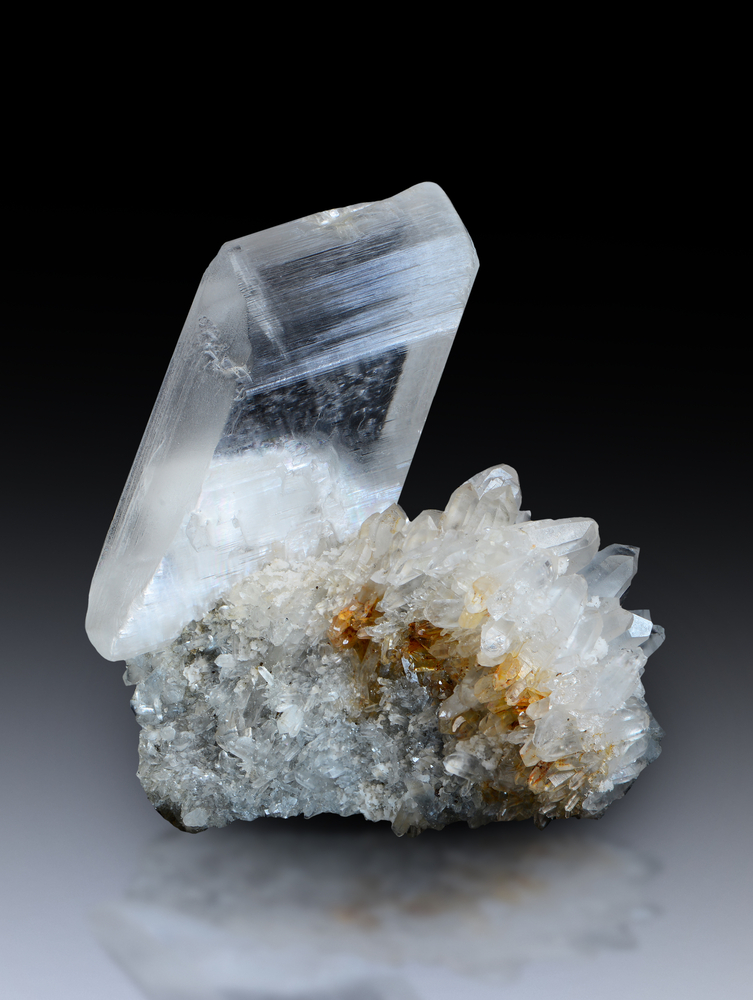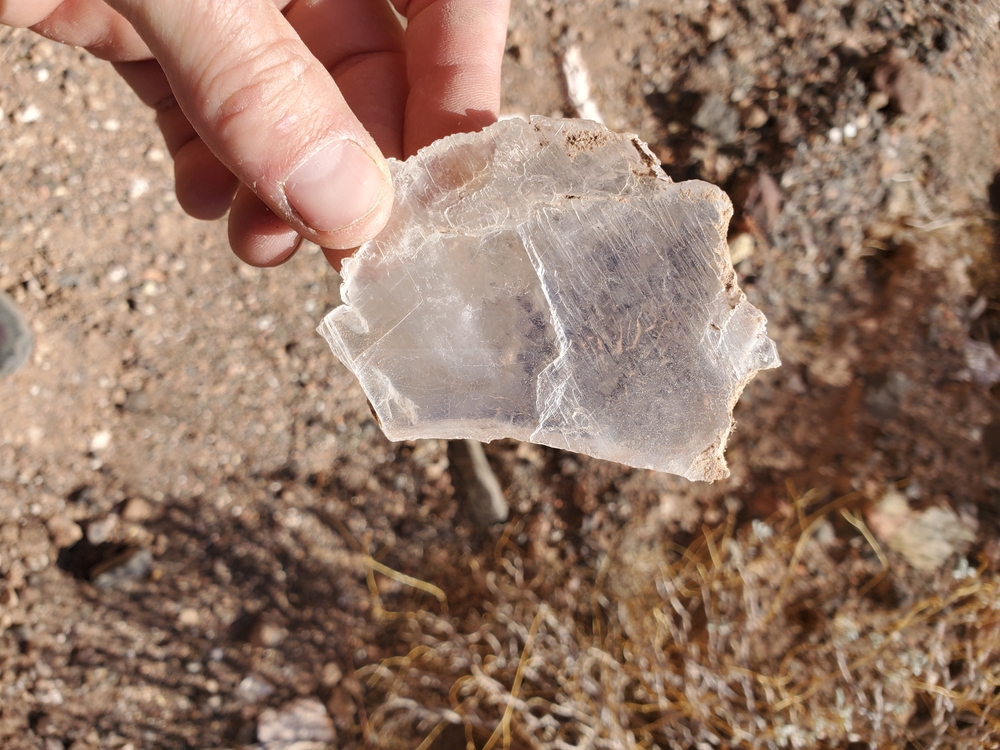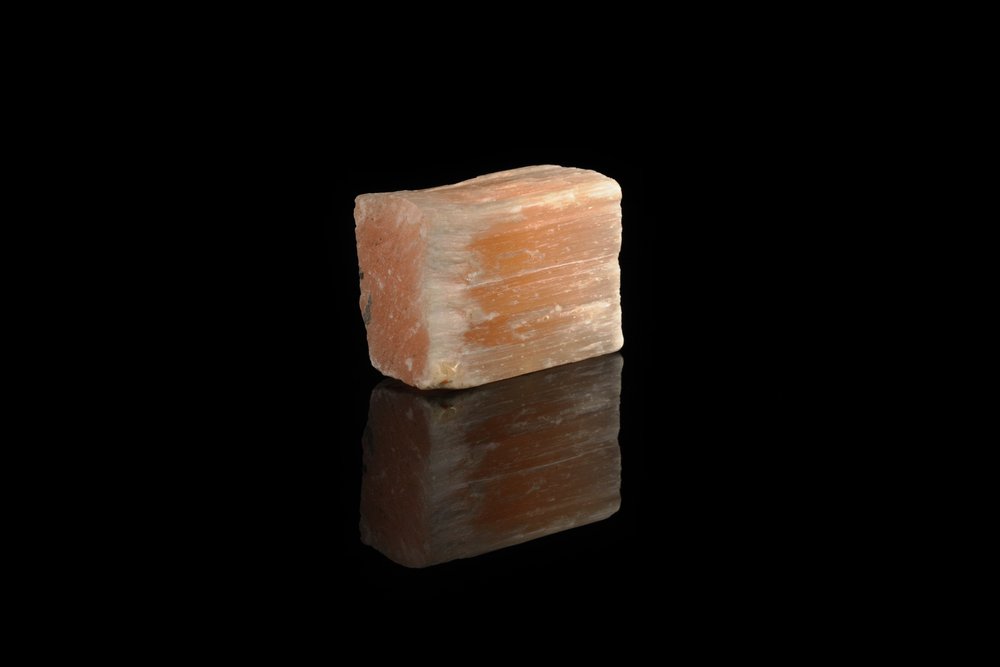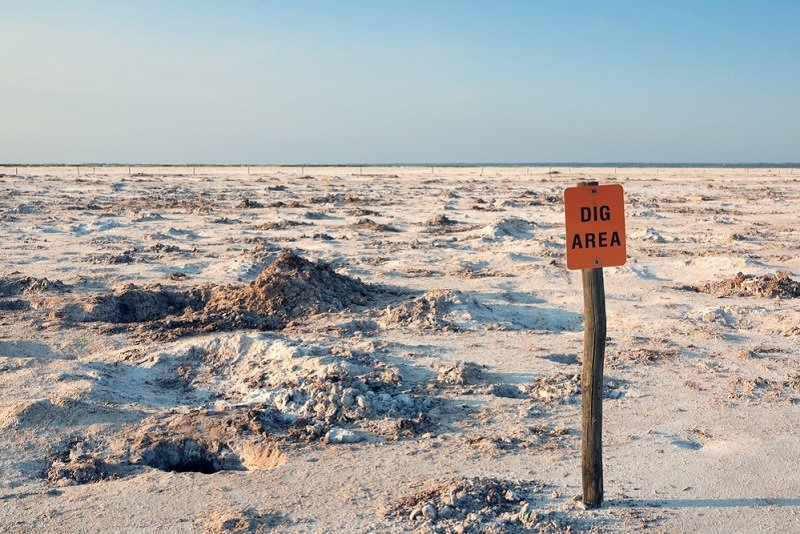Selenite is a strange mineral. It’s often seen in large, high-clarity crystals which are both beautiful and soft compared to the majority of compounds. This coveted form of gypsum comes in quite a few colors and variations, and it has some properties which make it very easy to identify compared to look-alikes.
So, if you’re looking to learn more about selenite then let’s take a look at our guide to collecting it!
What is Selenite?
Selenite is a crystallized form of the mineral gypsum. Selenite is most often seen as white, clear crystals. There are other forms, with various colors, which we will touch upon in a moment. It’s distinct from the other gypsum forms.

And that’s the rub of it: gypsum has a huge variety of crystal habits. Especially when we compare it to more mundane minerals like quartz or beryl. Gypsum comes in the following forms across the world:
- Selenite- A clear crystal with pearly luster.
- Satin Spar- A crystal with a fibrous growth pattern. Satin spar is usually white instead of clear and can display chatoyancy.
- Desert Rose- A crystallized form of gypsum with sand either on the surface or as inclusions throughout the stone.
All of these are gypsum, but their different initial formations create wildly different end specimens. Crystals of selenite can be tabular, bladed, or prismatic depending on the region where they’re found.
One of the odder forms comes in large, tabular sheets similar to mica. These have been used to make windows in the past, as in the case of the Church of Santa Sabina. These are often sold as selenite “windows” regardless of their size.
Selenite is incredibly soft compared to most minerals. It sits firmly at a 2.0 on the Moh’s scale, which is softer than copper (3.0) or even your fingernails (2.5). This makes it unsuitable for jewelry. Selenite is most frequently seen as simple specimens or elongated “wands” which are either large single crystals or carved from single crystals depending on the source.

Selenite doesn’t contain selenium despite the name. It just happens to be named after the same root word, which has the meaning of “moon.”
Instead, selenite is comprised of calcium sulfide.
Selenite crystals have the potential to become enormous. The Cave of the Crystals in Mexico is the best example, with crystals measuring over 30 feet long. “Wands” are often six inches or more, which is extremely uncommon with most crystalline minerals.
One of the odder properties of selenite is that it can bend. Not much, and it’s not elastic (meaning it won’t “snap back”), but it’s a very uncommon property for any crystalline material. Most are so brittle that any pressure great enough to move them will also shatter the crystal.

Selenite is found in blue, yellow, and red shades. These are usually lightly colored and caused by the inclusion of other minerals during the crystal’s formation. These are usually iron or clay-related minerals.
Among the more unique included specimens are the hourglass selenite crystals of Oklahoma. These have sand inclusions that create a distinctive “hourglass” shape inside of a normally shaped selenite crystal.
The thing to remember is that selenite is a completely crystallized form of gypsum that lacks the internal fibers of satin spar. This calcium sulfide mineral most often appears as large, clear crystals which are quite soft and it is common in most locations that have gypsum deposits.
Where Do I Find Selenite?

Selenite is a fairly common mineral. Gypsum crops up wherever there were former hydrothermal vents, alongside other sulfide minerals like pyrite and marcasite. There’s at least one location in the vast majority of states in the US, including Hawaii.
Major concentrations occur in the following states:
- California
- Arizona
- Colorado
- New Mexico
- Utah
- Indiana
- New York
If you don’t happen to be in one of those states, Mindat.org has a fairly comprehensive list of places in the United States where selenite is known to occur.
Some locations are near former mines, with the legal tangle and physical danger that entails. Be careful in these areas, especially in the southwestern desert where the open terrain and style of mining can make large areas hazardous to the unwary.
Roadcuts and other places which access the bedrock in these regions are often a great bet for someone searching for their own selenite.
Selenite is relatively easy to find in areas where it’s known to be present. It’s not like chasing down topaz or rare beryl varieties where days of work may yield only one or two imperfect specimens.
In areas with mine tailings, it’s easier to find but you may have to get permission. Gypsum mines often throw out quite a few pieces that collectors would consider desirable since their goal is just to remove as much of it from the ground as possible before processing it into final products like sheetrock.
The bottom line is that selenite is a very accessible mineral if you live in North America, with hundreds of known locations. It’s easier to dig than many crystals, but not quite as easy as things like picking up geodes in the Potato Patch in California.
Is There Fake Selenite?
One thing for buyers to be aware of is that fake, colored selenite is commonly seen on the market. This is often sold at a huge markup, it’s a frustrating con run on amateur rockhounds.
Any selenite with vivid colors is most likely dyed. Selenite is easy to dye due to the material’s structure and it’s frequently dyed in order to create colored varieties. Red and blue are the most common, often with ridiculous levels of hue saturation.
If it’s vividly colored then it’s not natural selenite. Some blue specimens get a decent amount of saturation, but they’re not common.
Often dyed selenite is labeled as dyed. You can find it in pastel rainbow tones, purples, and all sorts of patterns. These samples are great, and they look awesome on the shelf.
The problem comes from unscrupulous buyers selling single-color dyed selenite to people new to the hobby. If anyone is selling you colored selenite you should be very careful about paying a premium price.
While not the most common scam in the rock world, it’s definitely one that newbies should be aware of if they’re planning to purchase their own samples of this beautiful mineral.
- Online rock and mineral club for collectors of all levels!
- Find community with like-minded rock and mineral enthusiasts.
- Monthly Giveaways!
- Free Access to Entire Digital Library of Products (current and future products)*


